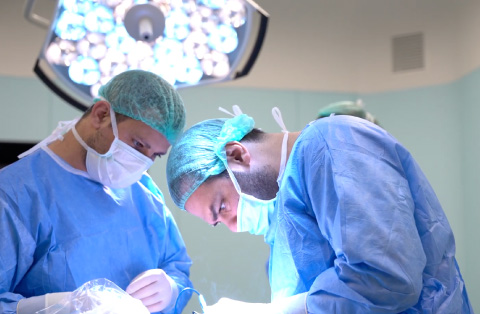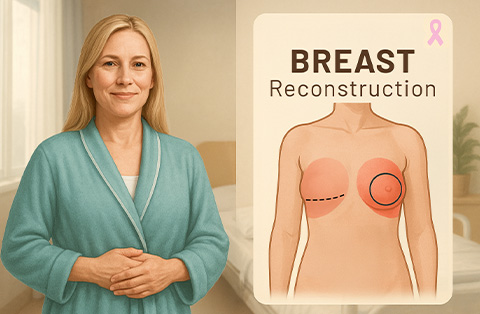Imagine your abdomen as a canvas that life has painted on. A tummy tuck, or abdominoplasty, is like an artist’s touch-up, smoothing out the creases and reshaping the landscape. It’s a surgical procedure that trims away excess skin and fat, and often, it’s like hitting a reset button for your midsection, especially after life events like pregnancy or significant weight loss.
What’s a Tummy Tuck, and Why Do People Choose It?
- The Goal: Picture a balloon that’s been inflated and then deflated; it doesn’t quite return to its original shape. That’s similar to what happens to your abdomen over time or after certain events. A tummy tuck pulls everything back into place, aiming for a flatter, more toned belly.
- Rising Popularity: It’s no wonder that tummy tucks have become a go-to procedure. They offer a solution when diet and exercise just don’t cut it, especially for those who’ve experienced major body changes. It’s not just about looking good in clothes; it’s about feeling confident in your skin.
- Common Reasons: From moms looking to reclaim their pre-pregnancy bodies to individuals celebrating a significant weight loss victory, the reasons for choosing a tummy tuck are as varied as the people seeking them. It’s a step towards matching the outside to the inner vitality and spirit.
In essence, a tummy tuck is more than a cosmetic fix; it’s a journey towards self-renewal and confidence. Whether it’s for aesthetic enhancement or to address physical changes, abdominoplasty offers a path to not just improve appearance but also boost self-esteem.
Tummy Tuck on the NHS
Navigating the NHS criteria for a tummy tuck can feel a bit like solving a puzzle. It’s not always straightforward but understanding the pieces can help you see the bigger picture. Let’s break down the circumstances and criteria that could make a tummy tuck available through the NHS.
When does the NHS Consider a Tummy Tuck?
- Not Just Cosmetic: First off, it’s key to know that the NHS typically views tummy tucks as cosmetic procedures. However, like a bridge that’s both a beautiful landmark and a vital route, a tummy tuck can be more than just cosmetic. It might be considered if there are underlying health or medical reasons.
- Health Over Aesthetics: The NHS might approve a tummy tuck if it’s needed for health reasons. Think of it like repairing a car’s engine rather than just giving it a new paint job. If the excess skin causes severe rashes or infections, for instance, a tummy tuck becomes a medical necessity, not just a cosmetic desire.
Criteria and Conditions for NHS Coverage:
- Meeting the Threshold: The NHS has specific criteria. It’s not just about discomfort with appearance. The excess skin must be causing significant health issues, like chronic skin conditions.
- Documented Evidence: Like gathering evidence for a trial, you’ll need documented proof from healthcare professionals that non-surgical treatments haven’t worked.
- A Waiting Game: Even if you tick all the boxes, there’s often a waiting list. Patience is key, as the process can take time.
In summary, getting a tummy tuck on the NHS is a bit like finding a needle in a haystack – it’s possible, but it’s rare and specific conditions must be met. It’s primarily about health, not just improving looks. If you’re considering this route, it’s crucial to have a thorough discussion with your GP or a healthcare professional to understand your options and the likelihood of meeting the NHS criteria.
The Tummy Tuck Procedure: What to Expect
Embarking on a tummy tuck journey is like preparing for a marathon; it requires preparation, endurance, and an understanding of the course ahead. Let’s walk through what the tummy tuck procedure involves, from the starting line of pre-surgery prep to the finish line of recovery.
A Detailed Walkthrough of the Tummy Tuck Procedure:
- The Starting Point: Think of the pre-surgery phase as the warm-up. You’ll have consultations with your surgeon, where they’ll map out the plan. It’s like plotting a route on a map, ensuring you both know the destination and the path to get there.
- The Procedure Itself: On the day of the surgery, you’re at the starting line. The procedure typically takes a few hours. Your surgeon will remove excess skin and fat, and might tighten your abdominal muscles. It’s like tailoring a loose dress to fit perfectly, contouring it to your body’s natural shape.
- Closing the Incisions: Once the reshaping is done, your surgeon will stitch up the incisions. This is a delicate part of the process, akin to stitching a delicate fabric, requiring precision and care.
Pre-Surgery Preparations:
- Getting Ready: Before the big day, you’ll need to follow specific instructions. This might include adjusting medications, avoiding certain foods or drinks, and arranging for someone to help your post-surgery.
- Mental Preparation: It’s also important to prepare mentally. Like gearing up for a significant event, mental readiness is key to a smooth experience.
Post-Surgery Recovery:
- The Healing Process: After crossing the finish line, the recovery phase begins. Initially, you’ll likely experience discomfort, swelling, and bruising. It’s normal and part of the body’s way of healing.
- Taking it Easy: You’ll need to take it easy for a few weeks. Avoid strenuous activities and follow your surgeon’s advice on how to care for your incision site.
- Seeing the Results: Full recovery can take several weeks to months. As time passes, you’ll start to see the transformation – like watching a flower bloom gradually, revealing its beauty.
In conclusion, a tummy tuck is a journey with several stages, each important in its own right. From the careful planning before the surgery to the patient recovery afterward, each step brings you closer to the desired outcome – a flatter, more toned abdomen. Remember, every journey is unique, and your experience may vary, but knowing what to expect can make the path clearer and more navigable.
Benefits and Risks of Tummy Tuck
Embarking on a tummy tuck journey is like setting sail on a sea of transformation. It’s a voyage that can bring significant changes to your body and self-perception. However, as with any journey, it’s important to weigh the potential benefits against the risks.
Potential Benefits:
- Enhanced Body Contour: Imagine your abdomen as a landscape reshaped to its most aesthetically pleasing form. A tummy tuck can significantly flatten and tighten your abdominal area, removing excess skin and fat.
- Restored Muscle Integrity: For many, especially post-pregnancy women, a tummy tuck is like reweaving a tapestry, restoring the integrity of abdominal muscles that have been stretched or separated.
- Boost in Confidence: This procedure often goes beyond physical transformation. It’s like emerging from a cocoon, where the change in your appearance can lead to a significant boost in confidence and self-esteem.
Risks and Considerations:
- Surgical Risks: Like navigating through a storm, every surgery comes with inherent risks. These include potential complications such as infection, bleeding, or adverse reactions to anesthesia.
- Scarring: A tummy tuck will leave a scar, typically along the lower abdomen. Think of it as a trade-off for a more contoured figure. The visibility of this scar varies and can be influenced by the surgical technique and individual healing processes.
- Recovery Time: The journey to full recovery is not a sprint; it’s a marathon. It requires patience and time, often necessitating weeks off work and assistance during the initial healing phase.
Tummy Tuck vs. Other Body Contouring Procedures
In the realm of body contouring, a tummy tuck is like a master sculptor, specifically skilled in reshaping the abdominal area. However, it’s just one tool in the cosmetic surgery toolbox.
Let’s compare it with other procedures to understand when a tummy tuck is the preferred choice.
Comparing Tummy Tuck with Other Cosmetic Procedures:
- Liposuction: Imagine liposuction as a fine brush, perfect for removing localized fat deposits. However, it doesn’t address excess skin or muscle laxity. A tummy tuck, on the other hand, is like a broad brushstroke, removing excess skin and tightening muscles, in addition to removing fat.
- Mini-Tummy Tuck: This is a less extensive version of a full tummy tuck. It’s like choosing between a full garden renovation (full tummy tuck) and just pruning the bushes (mini-tummy tuck). The mini version is best for those with minimal lower abdominal skin sagging.
- Body Lift: A body lift is a comprehensive approach, like renovating an entire house rather than just one room. It addresses excess skin and fat around the abdomen, hips, thighs, and buttocks. A tummy tuck is more focused, targeting only the abdominal area.
When is a Tummy Tuck Preferred?
- Significant Abdominal Changes: A tummy tuck is often the go-to procedure for significant changes in the abdomen, especially post-pregnancy or after major weight loss. It’s like choosing a heavy-duty tool for a big job.
- Desire for Muscle Tightening: If there’s a need for muscle repair, especially after childbirth, a tummy tuck is often the best option. It’s not just about skin and fat; it’s about restoring the underlying muscle structure.
- Combining with Other Procedures: Sometimes, a tummy tuck is part of a more extensive body makeover, like a mommy makeover, where it’s combined with other procedures like breast augmentation or liposuction for a more comprehensive transformation.
Cost of Tummy Tuck in the UK and Abroad
When considering a tummy tuck, the cost is a significant factor, much like budgeting for a major home renovation. Prices can vary widely depending on location and the specifics of the procedure. Let’s explore the cost landscape of tummy tucks in the UK and compare it with prices abroad, particularly in Turkey.
Overview of Costs in the UK:
- A Range of Prices: In the UK, the cost of a tummy tuck can vary greatly. It’s like shopping for a car – from economical models to luxury options, prices differ. On average, you might expect to pay anywhere from £4,500 to £8,000, but this can go higher depending on the clinic and the extent of the surgery.
- Factors Influencing Cost: Several factors can drive up the price, such as the surgeon’s expertise, the complexity of the procedure, and any additional treatments like liposuction. It’s important to consider these variables, much like weighing the features and brand when making a significant purchase.
Comparing Costs with Other Countries:
- Affordable Options Abroad: Looking beyond the UK, countries like Turkey have become popular destinations for cosmetic surgery due to more affordable prices. It’s akin to finding a vacation destination that offers luxury experiences at a fraction of the cost.
- Turkey’s Attractive Pricing: In Turkey, the cost of a tummy tuck can be significantly lower than in the UK, often ranging from £2,500 to £5,000. This price difference is due to various factors, including lower operational costs and the country’s focus on medical tourism.
- Comprehensive Packages: Many Turkish clinics offer packages that include the surgery, accommodation, and sometimes even post-operative care and airport transfers. It’s like booking an all-inclusive holiday where most of your needs are covered in one price.






